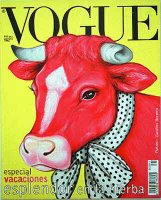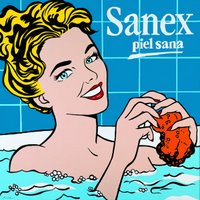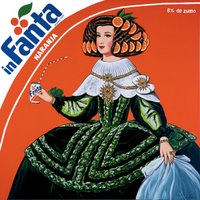
"Portugal não é pequeno!"
(in: Manuel João Vieira, Só desisto se for eleito, Lisboa, Ed. Artemágica, 2004, pp. 196-197)

 história do cinema pela sua participação em Goldfinger (1964) de Guy Hamilton, o terceiro da série James Bond protagonizado por Sean Connery: apesar de relegada para segundo plano pela ‘bondgirl’ Honor Pussy Galore Blackman, ninguém esquecerá o corpo de Eaton completamente coberto de tinta dourada. Alguns anos antes desse banho de spray dourado, Shirley Eaton protagonizou What a Carve Up! (1961), uma comédia negra de Pat Jackson (baseda livremente em The Ghoul (1933) de T. Hayes Hunter), que, se bem que a comparação seja, a meu ver, um pouco depreciativa e até injusta, se aproximava um pouco do estilo da fastidiosa série de filmes de comédia Carry On.../Com jeito vai... (30 filmes entre 1958 e 1978, mais uma tentativa de 'reanimação' em 1992 - é obra!).
história do cinema pela sua participação em Goldfinger (1964) de Guy Hamilton, o terceiro da série James Bond protagonizado por Sean Connery: apesar de relegada para segundo plano pela ‘bondgirl’ Honor Pussy Galore Blackman, ninguém esquecerá o corpo de Eaton completamente coberto de tinta dourada. Alguns anos antes desse banho de spray dourado, Shirley Eaton protagonizou What a Carve Up! (1961), uma comédia negra de Pat Jackson (baseda livremente em The Ghoul (1933) de T. Hayes Hunter), que, se bem que a comparação seja, a meu ver, um pouco depreciativa e até injusta, se aproximava um pouco do estilo da fastidiosa série de filmes de comédia Carry On.../Com jeito vai... (30 filmes entre 1958 e 1978, mais uma tentativa de 'reanimação' em 1992 - é obra!). de Jonathan Coe que pediu emprestado o título ao filme de Jackson.
de Jonathan Coe que pediu emprestado o título ao filme de Jackson. Anúncios ou artes plásticas? Quadros ou posters? Conceptualismo ou consumismo? Estas são algumas dúvidas pertinentes (ou não) que assolam quem espreita o universo da Pop Art em geral e, em particular, a arte do valenciano Antonio de Felipe (n. 1965). Como focos preferenciais - até à data - do seu trabalho de pintura, ilustração, escultura e instalação, Felipe elegou os temas da publicidade (com especial destaque para os logótipos comerciais), o cinema de Hollywood (particularmente retratos de ícones como Audrey Hepburn ou Marilyn Monroe), o pintor Diego Velásquez (uma série inteira homenageando o pintor do Barroco das Cortes Espanholas do século XVII, as suas Meninas e Infantas), retratos de celebridades tão diversas como a Madre Teresa e Claudia Schiffer e, finalmente,... as vacas (antes do advento da CowParade, vacas de todos os tipos e decoradas com inúmeros temas, recorrendo sobretudo à publicidade).
Anúncios ou artes plásticas? Quadros ou posters? Conceptualismo ou consumismo? Estas são algumas dúvidas pertinentes (ou não) que assolam quem espreita o universo da Pop Art em geral e, em particular, a arte do valenciano Antonio de Felipe (n. 1965). Como focos preferenciais - até à data - do seu trabalho de pintura, ilustração, escultura e instalação, Felipe elegou os temas da publicidade (com especial destaque para os logótipos comerciais), o cinema de Hollywood (particularmente retratos de ícones como Audrey Hepburn ou Marilyn Monroe), o pintor Diego Velásquez (uma série inteira homenageando o pintor do Barroco das Cortes Espanholas do século XVII, as suas Meninas e Infantas), retratos de celebridades tão diversas como a Madre Teresa e Claudia Schiffer e, finalmente,... as vacas (antes do advento da CowParade, vacas de todos os tipos e decoradas com inúmeros temas, recorrendo sobretudo à publicidade). A publicidade é, aliás, o motivo omnipresente na obra de Felipe, a que não é alheio o facto de ter trabalhado como director criativo numa agência de publicidade valenciana. O autor explica:
A publicidade é, aliás, o motivo omnipresente na obra de Felipe, a que não é alheio o facto de ter trabalhado como director criativo numa agência de publicidade valenciana. O autor explica: obras, Felipe explica que isso não distorce o intuito original destas e afirma, não sem um boa dose de ironia:
obras, Felipe explica que isso não distorce o intuito original destas e afirma, não sem um boa dose de ironia: influência das figuras de Velásquez, as cores fortes de Warhol e Lichtenstein e a proveniência de uma região plena de luz, cor e fiesta – veja-se as Fallas de Valencia – entendemos de forma mais clara o universo figurativo e cromático do autor.
influência das figuras de Velásquez, as cores fortes de Warhol e Lichtenstein e a proveniência de uma região plena de luz, cor e fiesta – veja-se as Fallas de Valencia – entendemos de forma mais clara o universo figurativo e cromático do autor.Advertising or Fine Arts? Paintings or posters? Conceptualism or consumerism? These are some pertinent (or not) doubts that occur to those who peek at the Pop Art universe in general and the art of the Valencian Antonio de Felipe (n. 1965) in particular. As a preferential focus – until now – of his painting, illustration, sculpture and installation, Felipe elected the subjects of advertising (with a special stress on commercial logotypes), Hollywood cinema (particularly portraits of icons such as Audrey Hepburn or Marilyn Monroe), the artist Diego Velasquez (a whole series as a tribute to the Baroque painter of the 17th century Spanish Courts, his Meninas and Infantas), portraits of celebrities as different as Mother Teresa and Claudia Schiffer and, finally,... the cows (before the advent of CowParade, all kinds of cows decorated with countless themes, especially resorting to advertising).
One of the idiosyncratic features of Felipe’s work is the crossover of distinct universes and their peaceful togetherness in a particularly humorous tone which, at the same time, explores a specific unifying concept (like Van Gogh’s Shoes with the Camper logo or Snow White biting Macintosh’s apple) and clearly discloses the influences that dwell in his work. The whole logotipos series resorts to this coupling between two fields of visual representation that would have nothing in common for a start – works of masters like Picasso, Van Gogh or Velasquez, or icons from the visual universe of animation or comic books (Disney, Hergé) interconnect with commercial brands such as Fanta, Pepsi, Kleenex or Dodot nappies, almost as if they had been conceived for that matter.
Actually, advertising is the omnipresent motif in Felipe’s work, and the fact that he worked as a creative director at a Valencian-based advertising agency is no coincidence. The author explains:
I am very familiar with that language and, therefore, I wanted to integrate it in my work.
If, on the one hand, the amusing reduction of these art objects to advertising images acts as a meditation on their iconographic value, on the other, the limit for the contamination that publicity exerts within the work of art is clearly challenged by the author, integrating in the paintings the logos of his sponsoring companies. Moving further towards this intrusion of advertising with the insertion of the very sponsors in the works, Felipe explains that it does not distort their original purpose and states, ironically:
I am delighted that, for the first time, a brand that appears in my paintings has paid to spread my work. It is good for them and it is good for me.
Antonio de Felipe is a unique case in the scene of Spanish Pop Art. Before him and worth of notice, there was only the Equipo Crónica, also formed in Valencia in the 1960s, (originally composed by Manuel Valdés, Rafael Solbes and Juan António Toledo) and whose “pop poster” tradition Felipe himself admits to have influenced him. If we add to that the influence of the figures of Velasquez, the strong colours of Warhol and Lichtenstein and a home region full of light, colour and fiesta – see Valencia’s Fallas – we understand more clearly the figurative and chromatic universe of the author.
If, by any chance, you happen to pass in Marbella by the end of this month, an exhibition with 12 works by Antonio de Felipe is being held at the Galeria de Arte Pedro Peña. A colourful and refreshing complement to enjoy alive after you leave the warmth of the beach…
Quando observamos a história recente da música popular, deparamo-nos muitas vezes com fenómenos meteóricos, os chamados one-hit wonders. Ou porque são cirurgicamente fabricados com esse objectivo ou, mais frequentemente, porque grandes multinacionais da música assim o desejam, obrigando distribidores e media a impingir esse produto ininterruptamente, são temas que isoladamente atacam de forma impiedosa as tabelas de vendas e inundam as ondas hertzianas até à náusea - pobre daquele que ouse sequer ligar o botão do rádio ou da televisão sem saber que estação está sintonizada - apenas para, umas semanas depois, se evaporarem tão rapidamente como surgiram. Nalguns casos, os autores aparecem e desaparecem tão depressa como a sua música, noutros vislumbra-se claramente um golpe de sorte do infeliz artista que após o big bang se arrasta moribundo, de forma clownesca, sem perceber que um raio não cai duas vezes no mesmo microfone.
Citando dois exemplos coincidentemente do ano de 1993, quem não se lembra (infelizmente, a memória só se perde para as coisas que realmente importam) de What’s Up? daquelas criaturas com uns chapéus gigantes e disformes a esconder cabelos com ar de quem não vê shampoo desde que Copérnico descobriu a teoria heliocêntrica, as 4-Non Blondes (perdão, os 4-Non Blondes, pois o colectivo inclui um senhor de apelido Rocha - chegará a portugalidade também aos confins do aberrante?); ou a Macarena, o êxito que elevou grandemente o estatuto da já nobre profissão de polícia sinaleiro, usando os gestos do controlo do trânsito para pôr a população deste planeta a tremer tão massivamente os seus tecidos adiposos que só me espanta os fabricantes de gelatina não terem usado a ideia para uma campanha publicitária. Se bem se lembram, a canção era interpretada por um duo de senhores com pinta de angariadores de seguros na reforma, daqueles que ao fim do dia se sentam na marisqueira a devorar gambas e imperiais, os decrépitos Los del Río. Poderia ainda referir dezenas de outros exemplos, como o Aserejé/The Ketchup Song das cordovesas Las Ketchup, mas vou-me abster de mais comentários, até porque as moças espanholas têm um ar simpático e já não têm mãos a medir com as acusações de - pasme-se - satanismo e invocação de forças malignas em Aserejé (a-ser-herege).
Tudo isto vem a (des)propósito dos Sukia, a banda que, não tendo sido uma one-hit wonder, tem um percurso que se aproxima muito da trajectória meteórica destas, motivo pelo qual me ocorreu a introdução deste texto. Os Sukia lançaram um primeiro álbum daquilo que prometia vir a ser uma interessantíssima carreira musical sob vários pontos de vista, mas acima de tudo com um experimentalismo singular que procurava fundir várias proveniências musicais e sonoras. Mas Contacto Espacial con el Tercer Sexo, afinal, não viria a ter sucessor e o quarteto formado por Sasha Fuentes, Ross Harris, Grace Marks, e Craig Borrell não mais voltaria a dar que falar deixando para além deste álbum, apenas mais dois singles retirados dele, Gary Super Macho (em CD e vinil 12'') e The Dream Machine (apenas em vinil 12'').
Os Sukia foram buscar o seu nome à vampira lésbica protagonista da série de banda-desenhada para adultos com o mesmo nome, e surgiram em Los Angeles, em 1996, no contexto da célebre cena musical de Silverlake, a mesma comunidade musical por onde se moviam Beck, os Beastie Boys ou os Dust Brothers (sendo estes últimos os produtores de Contacto Espacial...). Qualquer um dos quatro elementos principais do colectivo se aventura por distintos instrumentos, e esta facilidade multi-instrumental ajuda a configurar o ecléctico mosaico que forma a música dos Sukia. E quando se fala em instrumentos, é necessário encarar a palavra no seu sentido mais lato, pois as fontes sonoras estendem-se por uma vasta colecção de sons encontrados (como transmissões da NASA ou discos de hipnose) que é conjugada com vocalizações ora ritmadas, ora fantasmagóricas, assentes sobre uma colagem pairante de teclados (onde o moog domina), caixas de ritmos primitivas ou sopros que nos remetem para estéticas mais orquestrais, entre outras sonoridades.
O ambiente criado é, portanto, multi-facetado, e encontramos elementos que oscilam entre o glamour nostálgico da space age pop e da exotica, misturados com o som lo-fi dos equipamentos e samples retro, e características que remetem mais para um lounge de vanguarda futurista. Tudo isto contribui para uma recriação instrumental fascinante e cuja estranheza inicial se transforma rapidamente numa atracção ao mesmo hipnotizante e alienante, carregada também de um sentido de humor necessário à confirmação de um carácter mais lúdico e despretensioso.
Com um resultado tão atraente e uma crítica extremamente positiva na recepção do álbum, seria, pois, de esperar uma continuação do projecto, mas entretanto passaram dez anos e... nada, nem um sinal! Sukia, onde estão vocês?
The only thing we have left is to enjoy the suggestive illustration of some of the comic book covers that inspired the band’s name... (see above)
 Quem está familiarizado com a obra de Paul Auster reconhecerá diversos temas recorrentes que lhe são transversais - demandas recheadas de eventos causados por e causadores de coincidências (ou sincronicidades, na perspectiva psicanalítica de Jung) ou as vidas errantes cujo caminho invariavelmente termina no abandono e na degradação voluntária da condição humana como factor essencial para um auto-conhecimento.
Quem está familiarizado com a obra de Paul Auster reconhecerá diversos temas recorrentes que lhe são transversais - demandas recheadas de eventos causados por e causadores de coincidências (ou sincronicidades, na perspectiva psicanalítica de Jung) ou as vidas errantes cujo caminho invariavelmente termina no abandono e na degradação voluntária da condição humana como factor essencial para um auto-conhecimento. Robert Mitchum é Harry Powell, um pregador psicótico que se casa com a viúva Willa Harper (Shelley Winters) depois de saber pelo defunto marido, o seu antigo companheiro de cela, Ben Harper (papel interpretado por Peter Graves, o Jim de Mission: Impossible), que esta tem consigo uma pequena fortuna resultante do assalto a um banco. Quem afinal tem o dinheiro guardado é John, o filho de Willa, e Powell, depois de assassinar friamente Willa (numa cena cuja fotografia nos remete para o expressionismo alemão de O Gabinete do Dr. Caligari) inicia uma perseguição a John e sua irmã que culminará no confronto com Rachel Cooper (Lillian Gish), a figura matriarcal que irá fazer frente ao perverso pregador.
Robert Mitchum é Harry Powell, um pregador psicótico que se casa com a viúva Willa Harper (Shelley Winters) depois de saber pelo defunto marido, o seu antigo companheiro de cela, Ben Harper (papel interpretado por Peter Graves, o Jim de Mission: Impossible), que esta tem consigo uma pequena fortuna resultante do assalto a um banco. Quem afinal tem o dinheiro guardado é John, o filho de Willa, e Powell, depois de assassinar friamente Willa (numa cena cuja fotografia nos remete para o expressionismo alemão de O Gabinete do Dr. Caligari) inicia uma perseguição a John e sua irmã que culminará no confronto com Rachel Cooper (Lillian Gish), a figura matriarcal que irá fazer frente ao perverso pregador.Tal como a descrição acima citada de Laughton indica, o filme não pretende ter um cariz realista, e sente-se, de facto o ambiente de sonho, aliás, pesadelo, que percorre os 93 minutos de fotografia a preto e branco. Mitchum incarna na perfeição - numa das melhores interpretações da sua carreira - a figura ambígua, inquietante e ameaçadora da personagem, ensaiando neste controverso papel aquela que viria a ser a sua famosa imagem de marca, o semblante duro e sério que tantas vezes apreciámos nos westerns e films noir (e não só) que protagonizou.
 Alan Moore assumiu-se como um pioneiro do movimento iniciado nos anos 80 que facultou a elevação do estatuto da 9ª arte para lá das "histórias de quadradinhos" para crianças (e adultos pouco letrados). Depois de um esboço com V for Vendetta (recentemente adaptado para o cinema), conseguiu-o com Watchmen, uma graphic novel que tanto para leitores como para a crítica revolucionou o mundo dos super-heróis e transformou a experiência narrativa da banda desenhada em algo muito próximo da profundidade narrativa do romance, o que juntamente com a arte de Dave Gibbons, o artista que colocou a história de Moore em imagens, deu origem à única banda desenhada a receber um Hugo Award e a figurar entre os 100 melhores romances (de língua inglesa) da Time Magazine.
Alan Moore assumiu-se como um pioneiro do movimento iniciado nos anos 80 que facultou a elevação do estatuto da 9ª arte para lá das "histórias de quadradinhos" para crianças (e adultos pouco letrados). Depois de um esboço com V for Vendetta (recentemente adaptado para o cinema), conseguiu-o com Watchmen, uma graphic novel que tanto para leitores como para a crítica revolucionou o mundo dos super-heróis e transformou a experiência narrativa da banda desenhada em algo muito próximo da profundidade narrativa do romance, o que juntamente com a arte de Dave Gibbons, o artista que colocou a história de Moore em imagens, deu origem à única banda desenhada a receber um Hugo Award e a figurar entre os 100 melhores romances (de língua inglesa) da Time Magazine. O Rev. Charles Lutwidge Dodgson (1832-1898), professor de Matemática em Oxford, ficou para a história não como o eminente matemático que publicou diversos e relevantes tratados (Euclid and his Modern Rivals, de 1879 é o mais conhecido), mas como Lewis Carroll, o autor de Alice's Adventures in Wonderland (1865) e Through the Looking-Glass (1872), obras declaradamente infantis mas com uma série de características que as tornam apelativas e bastante interessantes para leitores mais amadurecidos. As aventuras de Alice foram originalmente contadas por Carroll à pequena Alice Liddell e às suas duas irmãs num dia de Verão de 1862, durante um passeio de barco, e no Natal desse ano Carroll ofereceu o livro a Alice com a dedicatória A Christmas Gift to a Dear Child in Memory of a Summer Day. Só 3 anos mais tarde seria publicado como Alice's Adventures in Wonderland, com as sobejamente conhecidas ilustrações de John Tenniel (a primeira versão tinha sido ilustrada pelo próprio Carroll).
O Rev. Charles Lutwidge Dodgson (1832-1898), professor de Matemática em Oxford, ficou para a história não como o eminente matemático que publicou diversos e relevantes tratados (Euclid and his Modern Rivals, de 1879 é o mais conhecido), mas como Lewis Carroll, o autor de Alice's Adventures in Wonderland (1865) e Through the Looking-Glass (1872), obras declaradamente infantis mas com uma série de características que as tornam apelativas e bastante interessantes para leitores mais amadurecidos. As aventuras de Alice foram originalmente contadas por Carroll à pequena Alice Liddell e às suas duas irmãs num dia de Verão de 1862, durante um passeio de barco, e no Natal desse ano Carroll ofereceu o livro a Alice com a dedicatória A Christmas Gift to a Dear Child in Memory of a Summer Day. Só 3 anos mais tarde seria publicado como Alice's Adventures in Wonderland, com as sobejamente conhecidas ilustrações de John Tenniel (a primeira versão tinha sido ilustrada pelo próprio Carroll).A segunda, numa perspectiva mais lúdica, é a edição de Alice's Adventures in Wonderland ilustrada por Anthony Browne. Trata-se de uma interessante alternativa às ilustrações de Tenniel, cujo pendor surrealista se encaixa perfeitamente no ambiente onírico da obra. Esta edição ganhou o Emil/Kurt Maschler Award e garantidamente encantará as crianças com as suas cores fortes e o seu humor, mas também adultos que apreciem ilustração de inegável criatividade artística. A obra vive numa comunicação constante com as imagens e, aliás, citando a protagonista, "para que serve um livro," pensou Alice, "sem imagens ou conversas?"

(Almost) complete discography (including compilations):